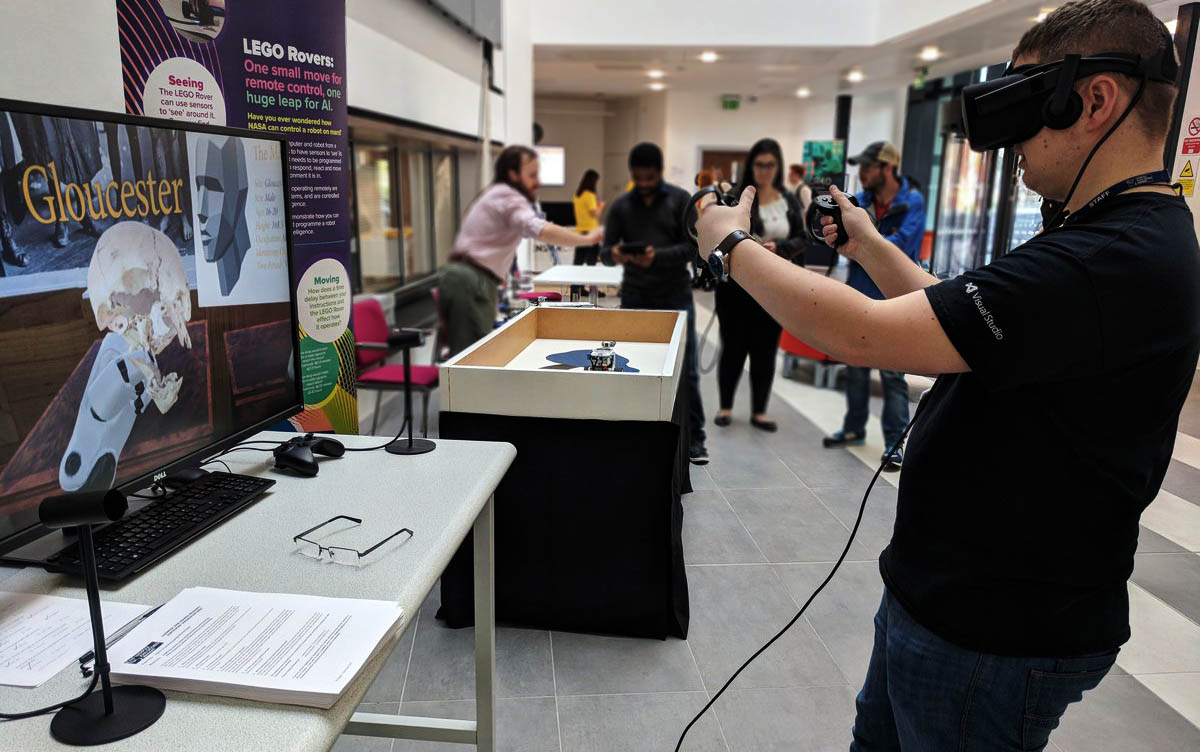For the Sensor City Light Night, LJMU set up a demonstration of the updated Virtual Anthropology Museum, for visitors to engage with and evaluate. For this, the Virtual Anthropology Museum was demonstrated on a custom-built VR-ready PC, with an i7 quad core processor, 64GB RAM, and an NVIDIA GTX 1080 with 8GB RAM. Additionally, an Oculus Rift Head Mounted Display (HMD) was set up, providing users with a more immersive virtual environment. Oculus Touch controllers were also connected, to allow users to reach out freely with their hands and interact with the artefacts located within the virtual world, providing a more interactive experience. This hardware configuration provides the player with a strong physical presence inside the virtual world, with many players acknowledging the quality of the interaction, being able to look around freely and be more hands on with the environment around them.
The users were assisted by LJMU staff who provided controller demonstrations, ensured the user was able to safely use the Oculus Rift, provided advice on the purpose of the game and what the aims are, and generally answered any questions pertaining to the virtual museum. For a portion of the users, A virtual experience through HMD and Touch controllers was a novel experience, and provided positive feedback on the experience, citing the added immersion of feeling like they’re there and able to interact with the objects, as a huge bonus. Additional feedback included the use of gaming technology to ‘gamify’ learning, which they felt would be beneficial to children and young adults as it would entice them to play. On the technical aspects, feedback was given in regards to the playability of the virtual museum, with several users requiring additional support to figure out the controls, and also a number of users discussing the rendering issues of informative text.

